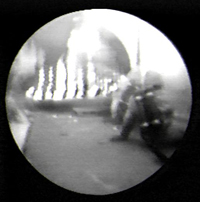 During the years I have amongst other things looked at differences between high pressure (app. 25 – 40 bar nozzle pressure) and low pressure (app. 3 – 10 bar nozzle pressure) fire suppression systems. Unfortunately, we have found that there are a number of misunderstandings. For example, some people think that it is better the higher the pressure. This is not the case – you also have to consider what you are going to use the pressure for. And flow rate has something to do with it as well…
During the years I have amongst other things looked at differences between high pressure (app. 25 – 40 bar nozzle pressure) and low pressure (app. 3 – 10 bar nozzle pressure) fire suppression systems. Unfortunately, we have found that there are a number of misunderstandings. For example, some people think that it is better the higher the pressure. This is not the case – you also have to consider what you are going to use the pressure for. And flow rate has something to do with it as well…
To put it simple, there are two things you can use pressure in a hoseline for:
1. transportation of water through the hose, and
2. disperse water from a nozzle.
Let us assume that I would like to get a certain amount of water out of my nozzle, X liter per minute. Basic physics tells us that the higher pressure at the pump, the longer the hose and / or the narrower the hose and we can still get X liter per minute from the nozzle.
And the higher the nozzle pressure, the longer throw and / or the smaller the droplets (depending on the construction and type of nozzle).
Let us now assume that I have a nozzle that disperse the water into small droplets, a fog nozzle. Generally, the higher the nozzle pressure the smaller will the droplets become (of course, there is a minimum of how small droplets can be). This is good and this is bad, depending on what I am using the droplets for. Smaller droplets have smaller mass, less momentum but also larger surface area in relation to their size. This will make the throw of the droplets shorter but at the same time they will vaporize easier. This makes smaller droplets better for cooling hot gases and flames. Larger droplets (lower nozzle pressure) have greater momentum and the vaporization takes longer time, making larger droplets better for cooling hot surfaces such as the fuel (since they travel easier/longer through hot gases and flames).
The problem is that the ordinary fire fighter only have one nozzle (suitable for pressures within some range). In addition, it requires a minimum amount of water to put out fire – in theory around 2 litres per square meter and minute.
In conclusion: neither large flow, low pressure, high flow, high pressure, large droplets or small droplets are the solution. You have to consider the situation and find a suitable combination for each situation. In addition, water is not the only suppression agent, sometimes we need to use something else such as foam or carbondioxide.
As usual in this business, the answer to any question is “it depends”!
